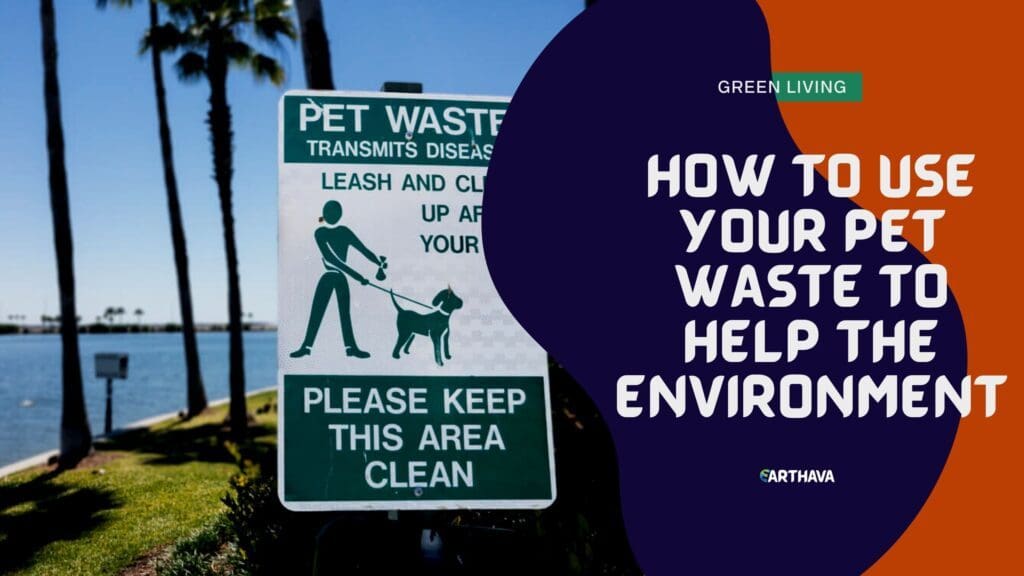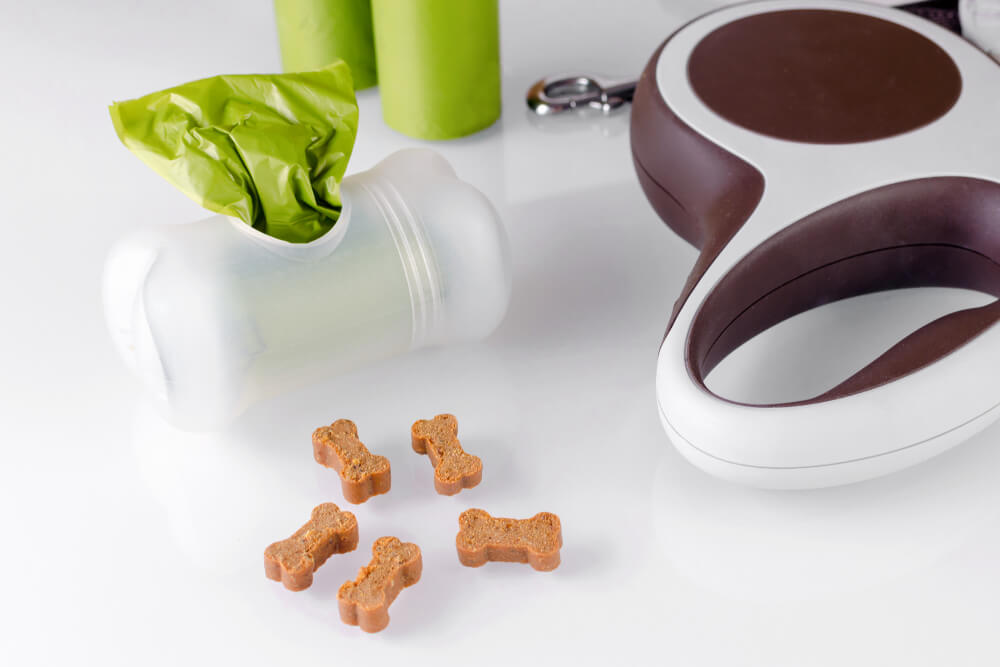Cleaning up after our pets is a messy business (pun intended), indeed. But once you’ve bagged and trashed it, do you stop and wonder what happens to the poo? Where does it go and how is it treated (if at all)?
We know no one really wants to think about the gross side of raising pets, but we must. After all, being aware means we have the knowledge and power to do something about an unspoken yet urgent problem.

Are you now wondering, if can pet waste be an environmental hazard? The simple answer is yes! Pets aren’t as environmentally friendly as we’d like to believe.
Now, even the most environmentally conscious person you know will not change their mind about having a pet and loving it like their own child simply because of this. Nobody expects you to. We’re simply saying that there are ways to use your pet’s waste to help the environment—an approach that’s better than “bag and trash.”
Let’s begin with understanding why we need to be more environmentally conscious regarding our pets.
How Are Pets An Environmental Hazard?
In their controversial book “Time To Eat The Dog,” Brenda and Robert Vales suggest that a single dog’s ecological footprint is up to twice that of a regular SUV! It’s truly staggering.
Let’s look at some more statistics to understand our pets’ carbon footprint and how the smallest decisions we make to care for our pets can sometimes cause large-scale damage to the environment.
Meat and Packaged/Commercial pet food
If you’re conscious of the effect that factory farming and commercial food have on the environment, you should probably scrutinize your pet’s food too. The numbers may surprise you.
The 160 million pet cats and dogs in the nation consume the same amount of meat as all of France! Meat sourced for pets generates up to 64 million tonnes of carbon dioxide a year, equivalent to 13.6 million cars in a year.
This is an incredible statistic when you consider the amount of land, water, and energy required to produce that amount of meat.
Commercial pet foods also involve a high environmental cost—shipping, storing, and distributing pet food can take a massive toll. And let’s not forget that packaging—plastic bags or tins and aluminum cans—generate tons of harmful waste and clog up our landfills.
Toys
How many times have you bought or been gifted toys for your dog only to realize your pet doesn’t like them? What happens to the toys then? Do they go in the trash?
This is just one example of what is a large-scale problem. There are billions of pet owners just like you, so can you imagine the amount of waste we’re producing simply with our pet toys?
Not to mention that a lot of these toys are made from cheap materials that break easily. Unfortunately, this means that the vicious cycle of waste generation continues no matter how much you try to control your impulse purchases.
Evidently, pets generate a lot of waste. However, we’ve only covered the production wastage for toys and food. We still have to consider what happens after they’ve digested their delicious pet food!
How Does Pet Waste Affect The Environment?
The biggest pollution generator when it comes to pets is poop!
Did you know that for every pound your dog weighs, they produce ten times the amount of fecal coliform bacteria as a cow?
When dog poop is washed down storm drains and into the ocean, it can fuel the growth of toxic algae that absorbs oxygen, resulting in the death of coastal life.
Now, you probably think this doesn’t apply to you as you always clean up after your dog.
Well, if you’re like most other owners, you probably use plastic bags to do so. So consider this—plastic poop bags account for 4% of San Francisco’s municipal waste.
So not only are we using an immense amount of plastic in their food and toys, but even their daily doo involves wastage of plastic!
Dogs in America produce over 11.6 million tons of poop every year. Every ounce of this poop releases methane into the atmosphere—a gas that is 30% more toxic than carbon dioxide.
If you do the math, you’ll see just how much dogs impact the environment.
While we can’t deny that the sheer number of pets is creating an environmental issue, we know that they help enrich our lives. And since it’s impossible to imagine a society without pets, we have to figure out ways to use your pet’s waste to help the environment.
ALSO READ: 6 Green Ways To Take Care Of Your Pet
How Does Pet Waste Benefit the Environment?
Do you have a dog you love dearly but don’t want to hurt the environment? Are you thinking, What can dog waste be used for We’ve got a few suggestions!
Composting
Composting is a great way to dispose of all kinds of waste, including your pet’s feces. Before you rush to add dog waste to your composting bin, take a minute to learn how to compost dog waste. If composting is not an option for you, install an in-ground mini-septic system.
Inventive Disposal Systems
Cities worldwide are in search of alternate environmentally friendly ways to dispose of pet waste. This has led to creative solutions such as generating energy from pet waste! For example, the Sunset Scavenger uses bacteria to convert dog waste into methane gas. This is then used to produce electricity, just like natural gas.
Though this may not apply to you on an individual scale, you could do your research and see if such a disposal system is available near you. You could even be proactive in requesting or suggesting that such systems be implemented in your vicinity by writing to your representatives!
How To Be A Greener Pet Parent?
By now, you’re probably wondering, How can I be more environmentally friendly with my pets? Don’t worry. It’s not too hard, and we’re here to guide you!
A few simple changes that you could make to help your pet be more environmentally friendly are:
Flushing
According to the EPA, flushing your dog’s waste is the most sustainable way to get rid of it. You could try to train your dog to use your toilet when they need to go. If your dog prefers doing their business outside, you could invest in flush-able poo bags.

Using Biodegradable Poop Bags
The first step to living a greener life as a pet owner should be to invest in biodegradable poop bags. There are several options available on the market. They won’t change your life as you’re still responsible for the clean-up, but they will definitely have a huge impact on the overall plastic waste pile-up.
Sustainable Practices
Why buy a toy imported from another country? Or one that uses material from another part of the world? Explore alternatives near you—find and support a local business that makes toys made from natural fibers. Consider a jute chew toy with natural stuffing rather than a plastic one.
Making food for your dog at home is another great way to reduce the impact your dog has on the environment.
Want to do more? How about holding a community awareness program that helps your neighbors understand and tackle the issue of pet-related waste? Teaching others about the environmental impact of pet waste and how to dispose of it safely could just be your important contribution to a greener world. You can also include information that addresses How do pets help the environment? so that the takeaway is not all negative.
Final Thoughts
Our love for our pets is immense, but it cannot outweigh our respect for the planet. We have to take care of Mother Nature the same way we take care of our pets and do the best we can for both.
Though most common pets aren’t as eco-friendly as we’d like them to be, it doesn’t have to stop us from enjoying their company and loving them wholeheartedly. There are ways to compromise and ensure that you provide the best for your pet without harming the environment.
You can’t expect your pet to know better, so it’s your responsibility to understand the ways to use your pet’s waste to help the environment.
It only requires a little effort on your part to make a significant difference! A better environment will help you and your pet lead better, healthier lives. It is a win-win situation!


